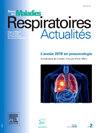{"title":"抗癌免疫疗法的生物学基础","authors":"C. Mascaux , L. Pabst , V. Soumelis , J. Medvedovic , C. Hoffmann","doi":"10.1016/S1877-1203(24)00071-5","DOIUrl":null,"url":null,"abstract":"<div><div>Malignant tumors can be recognized as different from self identity by the immunological system, and the basis of immunotherapy thus relies on the use of immune system to fight cancer. Modern immunotherapy is actually a targeted therapy, since targeting proteins and biological mechanisms identified as favoring the anergy of immune system towards cancer. Complex cell interactions occur within the cancer microenvironment, between immune cells (T-lymphocytes CD4 and CD8, B-lymphocytes and plasma cells), between immune cells and cancer cells, between immune cells and stromal cells (cancer-associated fibroblasts), or between stromal cells and cancer cells. Such interactions consist of dynamic inter-cell communication networks, varying during the course of tumor evolution, but still sensitive to therapeutic interventions. A family of receptors named «immune checkpoint controls » has the physiological role to avoid a spontaneous unregulated hyper-activation of T-lymphocytes that could lead to self-immune diseases otherwise. However, such receptors are also used by cancer cells for inactivating T-lymphocytes, and thus escape to the anti-cancer immune system response. The aim of immunotherapy is therefore to restore an efficient T-cell response to cancer cells, either by inhibition of negative immune checkpoints, with blocking antibodies (immune checkpoints inhibitors), or to activate positive immune checkpoints using agonist antibodies. 1877-1203/© 2024 SPLF. Published by Elsevier Masson SAS. All rights reserved.</div></div>","PeriodicalId":53645,"journal":{"name":"Revue des Maladies Respiratoires Actualites","volume":"16 2","pages":"Pages 2S19-2S26"},"PeriodicalIF":0.0000,"publicationDate":"2024-10-01","publicationTypes":"Journal Article","fieldsOfStudy":null,"isOpenAccess":false,"openAccessPdf":"","citationCount":"0","resultStr":"{\"title\":\"Bases biologiques de l’immunothérapie anti-cancéreuse\",\"authors\":\"C. Mascaux , L. Pabst , V. Soumelis , J. Medvedovic , C. Hoffmann\",\"doi\":\"10.1016/S1877-1203(24)00071-5\",\"DOIUrl\":null,\"url\":null,\"abstract\":\"<div><div>Malignant tumors can be recognized as different from self identity by the immunological system, and the basis of immunotherapy thus relies on the use of immune system to fight cancer. Modern immunotherapy is actually a targeted therapy, since targeting proteins and biological mechanisms identified as favoring the anergy of immune system towards cancer. Complex cell interactions occur within the cancer microenvironment, between immune cells (T-lymphocytes CD4 and CD8, B-lymphocytes and plasma cells), between immune cells and cancer cells, between immune cells and stromal cells (cancer-associated fibroblasts), or between stromal cells and cancer cells. Such interactions consist of dynamic inter-cell communication networks, varying during the course of tumor evolution, but still sensitive to therapeutic interventions. A family of receptors named «immune checkpoint controls » has the physiological role to avoid a spontaneous unregulated hyper-activation of T-lymphocytes that could lead to self-immune diseases otherwise. However, such receptors are also used by cancer cells for inactivating T-lymphocytes, and thus escape to the anti-cancer immune system response. The aim of immunotherapy is therefore to restore an efficient T-cell response to cancer cells, either by inhibition of negative immune checkpoints, with blocking antibodies (immune checkpoints inhibitors), or to activate positive immune checkpoints using agonist antibodies. 1877-1203/© 2024 SPLF. Published by Elsevier Masson SAS. All rights reserved.</div></div>\",\"PeriodicalId\":53645,\"journal\":{\"name\":\"Revue des Maladies Respiratoires Actualites\",\"volume\":\"16 2\",\"pages\":\"Pages 2S19-2S26\"},\"PeriodicalIF\":0.0000,\"publicationDate\":\"2024-10-01\",\"publicationTypes\":\"Journal Article\",\"fieldsOfStudy\":null,\"isOpenAccess\":false,\"openAccessPdf\":\"\",\"citationCount\":\"0\",\"resultStr\":null,\"platform\":\"Semanticscholar\",\"paperid\":null,\"PeriodicalName\":\"Revue des Maladies Respiratoires Actualites\",\"FirstCategoryId\":\"1085\",\"ListUrlMain\":\"https://www.sciencedirect.com/science/article/pii/S1877120324000715\",\"RegionNum\":0,\"RegionCategory\":null,\"ArticlePicture\":[],\"TitleCN\":null,\"AbstractTextCN\":null,\"PMCID\":null,\"EPubDate\":\"\",\"PubModel\":\"\",\"JCR\":\"Q4\",\"JCRName\":\"Medicine\",\"Score\":null,\"Total\":0}","platform":"Semanticscholar","paperid":null,"PeriodicalName":"Revue des Maladies Respiratoires Actualites","FirstCategoryId":"1085","ListUrlMain":"https://www.sciencedirect.com/science/article/pii/S1877120324000715","RegionNum":0,"RegionCategory":null,"ArticlePicture":[],"TitleCN":null,"AbstractTextCN":null,"PMCID":null,"EPubDate":"","PubModel":"","JCR":"Q4","JCRName":"Medicine","Score":null,"Total":0}
引用次数: 0


